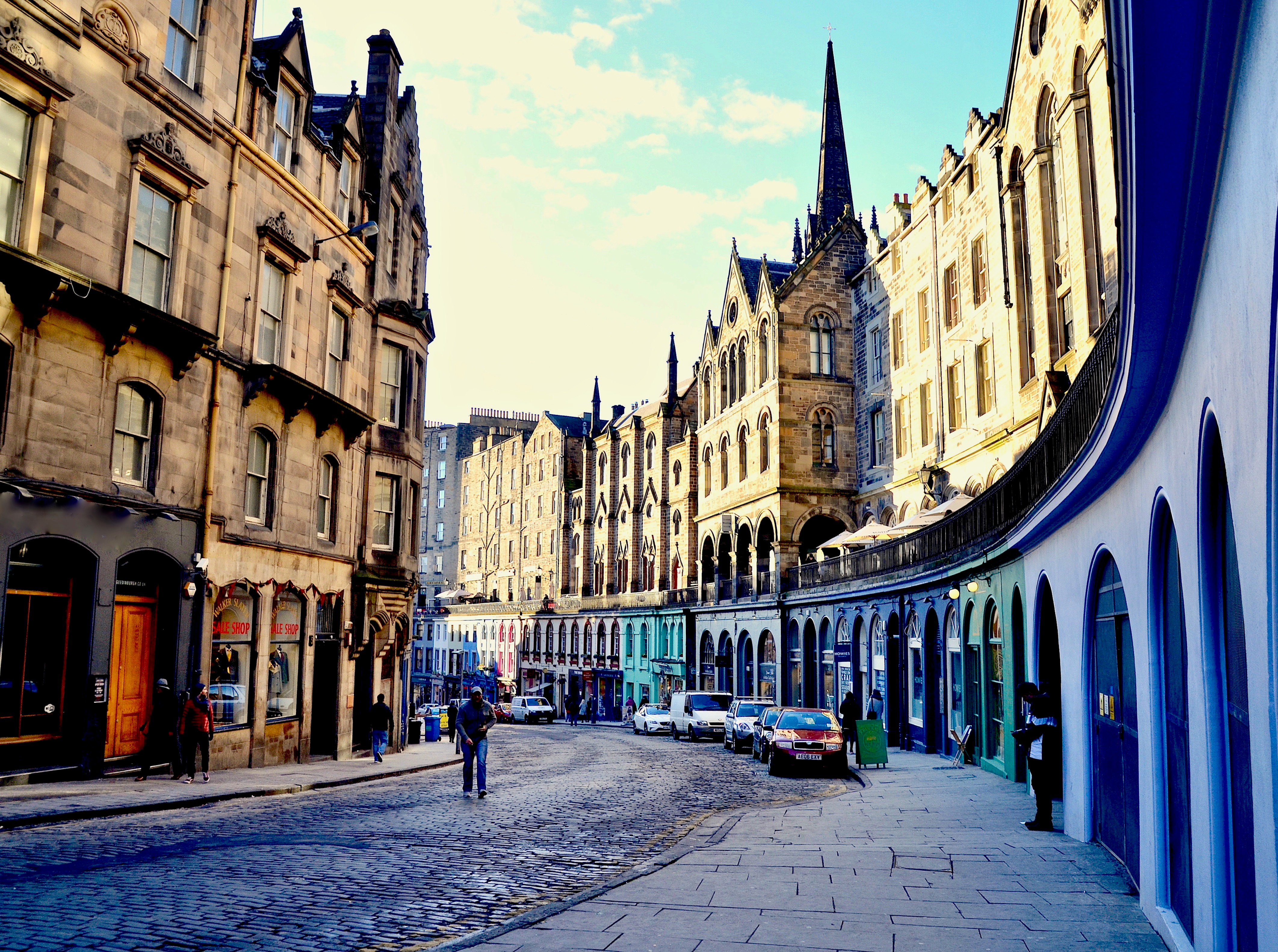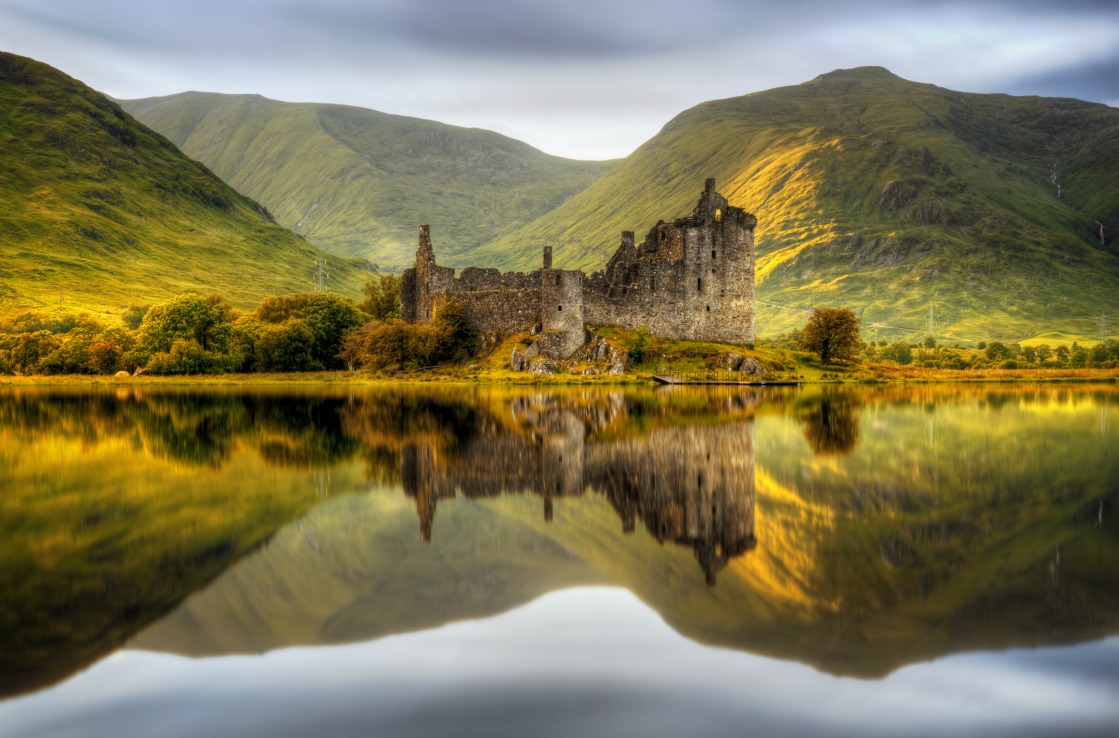It doesn’t matter if you call it ‘Auld Reekie’ or ‘the Athens of the North’, Edinburgh is a unique city that simply has to be experienced. One of Europe’s finest capitals, it combines the grandeur of its signature buildings with a friendly welcome, history to dig deep into and enough food, theatre and music to make sure there’s never a dull moment.
Here are a few of our suggestions for making the most of your time in this spectacular Scottish location.
Rock and royalty
Stand on Castle Rock and you’re standing on hundreds of millions of years of history – albeit mostly geological. Estimated to be more than 350 millions years old, this long dormant volcano formed a hill that has played its role in battles and sieges aplenty. Its height making it easy to protect, the city grew up around the various defences and fortresses erected here since before the Romans first came.
Today it’s crowned by Edinburgh Castle, standing proud for over 1,100 years, in which time it has undergone more than two dozen sieges. It’s the biggest attraction in town, full of fascinating gates, chapels, guns and statues, and the perfect place to learn about proud Scottish history.
The Royal Mile runs from here to Holyrood Palace, the Scottish residence of the UK royal family and once home of Mary Queen of Scots. You can tour her bedchamber located in the north-western tower, which was erected in 1529. Take an audio tour for insight into the enthralling, murderous history of the place.
Festival fun
Edinburgh overflows with festivals in the summer. There’s the original arts festival, and then there’s the Fringe, which has overtaken it in popularity and is now the world’s largest arts gathering.
The event takes over the city in August. The streets throng with performers, visitors and others marketing their one-man shows. Dip into music, experimental theatre and comedy shows from the crème de la crème of the world scene.
Be sure to book ahead for the most popular performances, although there’s something to be said for gambling on some of the more obscure shows – you could be the only person in the audience. There are usually more than 3,000 shows (and numerous performances of each), so there really is something for everyone.
The old to the new
Part of Edinburgh’s enduring appeal is its undoubted beauty. Both the Old Town and the New are full of gorgeous buildings lining the cobbled streets. The Georgian-era architecture of the New Town is wonderfully preserved, the roads littered with photo-worthy features and regal squares.Head down Princes Street to get a mix of both old and new. On one side of the road is Jenners, a department store opened in 1838 with a grand hall, external sculptures and proud tradition. On the other is the Scott Monument, the building of which was started in the same year. The 200ft tall tower commemorates the author Walter Scott (as does the nearby train station, named for his Waverley novels) and was opened to the public in 1840.
The monument commemorates more than just Scott – numerous other poets and authors are cast in stone, notably Robert Burns and Tobias Smollett. There’s also a rich cast from his novels, including Richard the Lionheart, Friar Tuck, Mary Queen of Scots, Rob Roy and Robert the Bruce.
A Scottish smorgasbord
As befits Scotland’s capital, Edinburgh is awash with museums and galleries, spanning the world on occasion, but often cleaving close to home to tell the story of the Scottish.
The National Museum of Scotland is spread across two buildings on Chambers Street - one old, one new. The remarkable objects on display may well be genuinely surprising – Scots innovation had a remarkable and lasting impact on how the world developed.
Make sure you see the Grand Gallery, T-Rex, Millennium Clock, Royal artefacts and try your best to stop your kids having a spin in the human-sized hamster wheel. One of the museum’s most famous treasures is the Lewis Chessmen. Discovered on the Isle of Lewis in 1831, it is thought they were probably carved in the late 12th century from walrus tusks in Scandinavia. They were featured in the film Harry Potter and the Philosopher’s Stone.
For more famous Scots, tour the National Portrait Gallery on Queen Street. The building is remarkable, an imposing late 19th century Gothic revival classic, while the collections spans royalty and celebrities. The gallery continues to innovate, commissioning work from the cream of the latest Scottish artists.
On a fine day, there are few better places to explore than the Royal Botanic Garden. Originally established in 1670 it was moved in 1823 and has flourished since. Potter round the Victorian glasshouses and you’ll see rare plants, inhale heady scents and be stunned by the beautiful rock garden, perhaps the best in the world.
A wizarding world

Before the characters she created were famous the world over, J.K. Rowling spent many years writing in Edinburgh’s cafés taking inspiration from the city’s spires and magic. You can take guided Harry Potter tours of Edinburgh, but it’s much more fun to find the sights and sounds that inspired Rowling for yourself.
Look out for the plaque on the corner of Drummond Street marking the spot – Nicolson’s Café, sadly closed – where she wrote some of Harry Potter and the Philosopher’s Stone.
The Elephant House on George IV Bridge boldly claims to be ‘The birthplace of Harry Potter’. While she’d actually started the first novel before moving to Edinburgh, she did write plenty of her subsequent works within what is now probably the busiest Edinburgh site for Potter pilgrims.
To really push the boat out, reserve room 552 at the Balmoral Hotel. Now called the J.K. Rowling Suite, it’s where she wrote the final pages of the last book, Harry Potter and the Deathly Hallows. The room contains a marble bust that she wrote on. As Potter places go, it’s the ultimate.
Discover everything this amazing city has to offerwithcarrental in Edinburgh from Hertz. It will give you the freedom to explore the city and head out into Scotland’s dramatic landscape.
